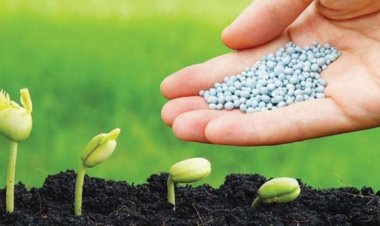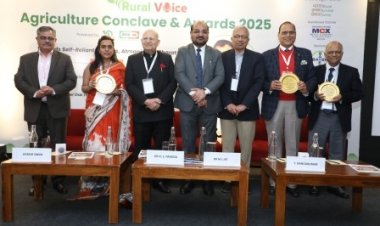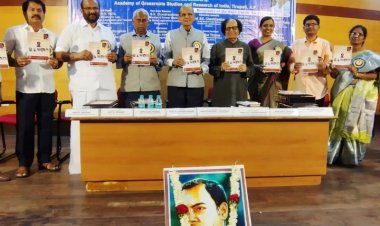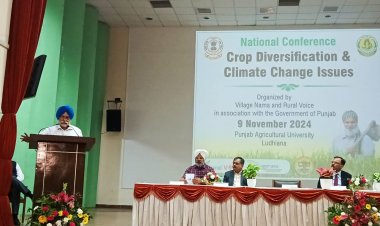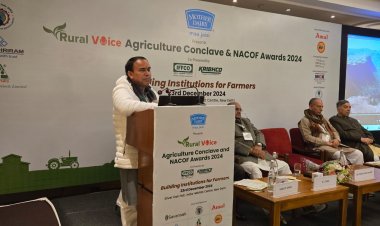GEAC recommends environmental release of GM mustard
The environmental release of genetically modified (GM) mustard has been recommended in the country. This case of a GM crop recommendation comes after 20 years. The recommendation has been made for Dhara Mustard Hybrid-11 (DMH-11), a GM hybrid variety of mustard developed by Dr Deepak Pental, the ex-Vice Chancellor of the University of Delhi. This recommendation was made by the Genetic Engineering Appraisal Committee (GEAC) of the Ministry of Environment, Forest and Climate Change (MoEF&CC) in its 147th meeting held on 18 October 2022.

The environmental release of genetically modified (GM) mustard has been recommended in the country. This case of a GM crop recommendation comes after 20 years. The recommendation has been made for Dhara Mustard Hybrid-11 (DMH-11), a GM hybrid variety of mustard developed by Dr Deepak Pental, the ex-Vice Chancellor of the University of Delhi.
This recommendation was made by the Genetic Engineering Appraisal Committee (GEAC) of the Ministry of Environment, Forest and Climate Change (MoEF&CC) in its 147th meeting held on 18 October 2022. Whether this mustard variety will be grown in the current Rabi season will have to wait for the government’s decision. This will be possible only after the government approves the GEAC recommendations.
The DMH-11 hybrid variety of mustard whose environmental release has been recommended by the GEAC was developed by the Centre for Genetic Manipulation of Crop Plants (CGMCP), University of Delhi South Campus, New Delhi. The transgenic mustard hybrid DMH-11 uses parental lines bn 3.6 carrying barnase and bar genes, and modbs 2.99 containing barstar and bar genes.
According to sources, the GEAC recommendations are issued only after obtaining consent from the Environment Minister. It is, therefore, being assumed that the Environment Minister is in agreement with this move of the GEAC. As a result, there is all possibility of these recommendations being granted approval from the government. Until 2010, the GEAC recommendations were considered to be the final approval. Since then, however, the consent of the minister concerned is obtained before issuing the recommendations.
Once the government grants its approval to the GEAC recommendations, it will be possible to grow this GM mustard variety without any controlled environment. Pollinator and other effects will be monitored for this and data will be collected. This is being considered a standard procedure and now seeds of this variety will be developed. The Indian Council of Agricultural Research (ICAR) has been assigned the responsibility of monitoring. The requisite procedure adopted by ICAR for the commercial release of a GM variety under the Seed Act will be followed. The GEAC approval has been made for four years.
Rural Voice did a detailed story on 17 October 2022 regarding the possibility of GM mustard being granted approval in the GEAC meeting scheduled to be held on October 18. The story may be accessed on the link given below.
Speaking to Rural Voice on these recommendations, Dr RS Paroda, Chairman, Trust for Advancement of Agricultural Sciences (TAAS) and former Director-General of ICAR, said, “This is a progressive move. We shall be benefited from it in increasing edible oil production and the farmers will also be benefited. While other countries have been gaining from the new technology for the last 25 years, our country has not been able to take its advantage. Besides, what is significant is that the GM mustard technology recommended by the GEAC is an indigenous one and we must take its advantage.”
One of the members of the GEAC sub-committee said to Rural Voice, “There is a possibility that GM mustard will be used for seed production in the current Rabi season. It is, therefore, necessary that the government take an immediate decision on this as the sowing of mustard for the Rabi season has started.”
Dr Pental created DMH-11 through transgenic technology, primarily involving the Bar, Barnase and Barstar gene system. The Barnase gene confers male sterility, while the Barstar gene restores DMH-11's ability to produce fertile seeds. The process also involves the insertion of a third gene called Bar. A patent had been obtained for this GM event in the US in 1991. Dr Pental has “tweaked” the process and he, too, has obtained its patent from the US. The Varuna species of mustard has been used for this GM variety.
A senior scientist told Rural Voice that the GM mustard variety based on Dr Pental’s Barnase-Barstar technology had even been given approval in the 133rd GEAC meeting. Immediately later, however, the approval was stayed in its 134th meeting.
One of the members of the sub-committee told Rural Voice that better-quality hybrid varieties were necessary to increase mustard production. The hybrid varieties of several private companies are selling in the market. But a high level of productivity can be attained only with the approval of the GM variety. India is not able to come out of the cycle of import dependence in the case of edible oils. In such a situation, subsequent to the approval given to GM mustard, its better GM varieties can bring about a steep hike in oil production. This is what happened in the case of cotton. GM cotton put an end to import dependence and enabled India to become a large cotton exporter, too.
Prof. KC Bansal, Secretary of the National Academy of Agricultural Sciences (NAAS) and former Director of the National Bureau of Plant Genetic Resources (NBPGR), said to Rural Voice, “Barnase–Barstar is a proven GM technology for hybrid development in mustard. We must promote this technology and the resultant GM mustard hybrid for the benefit of farmers, consumers and the nation for reducing our dependence on oil imports. Further, the transgenic mustard parental lines developed using Barnase and Barstar genes will prove useful for transferring these genes into more diverse parental lines for developing more hybrids with higher yields.”



 Join the RuralVoice whatsapp group
Join the RuralVoice whatsapp group



















